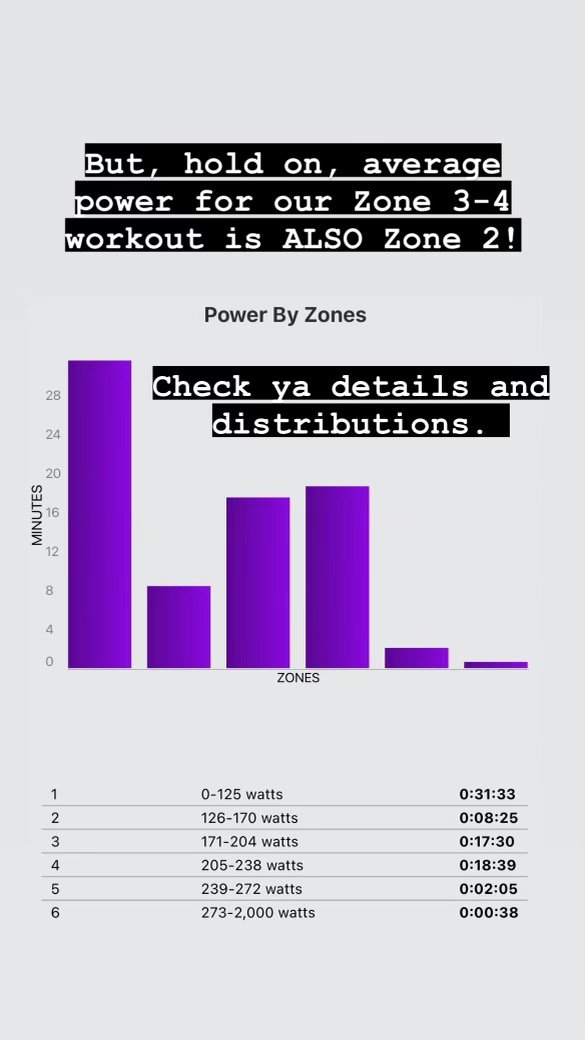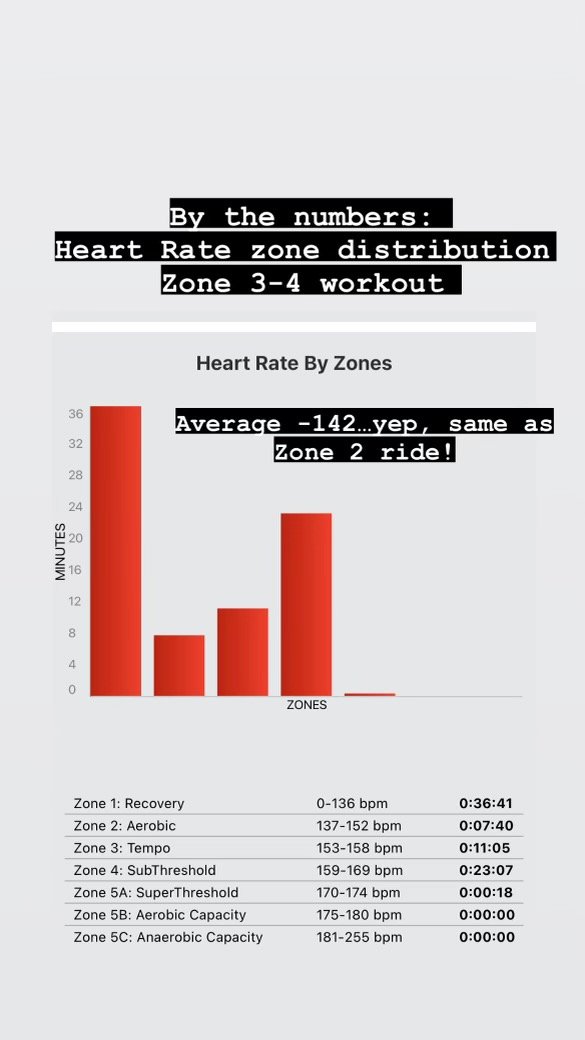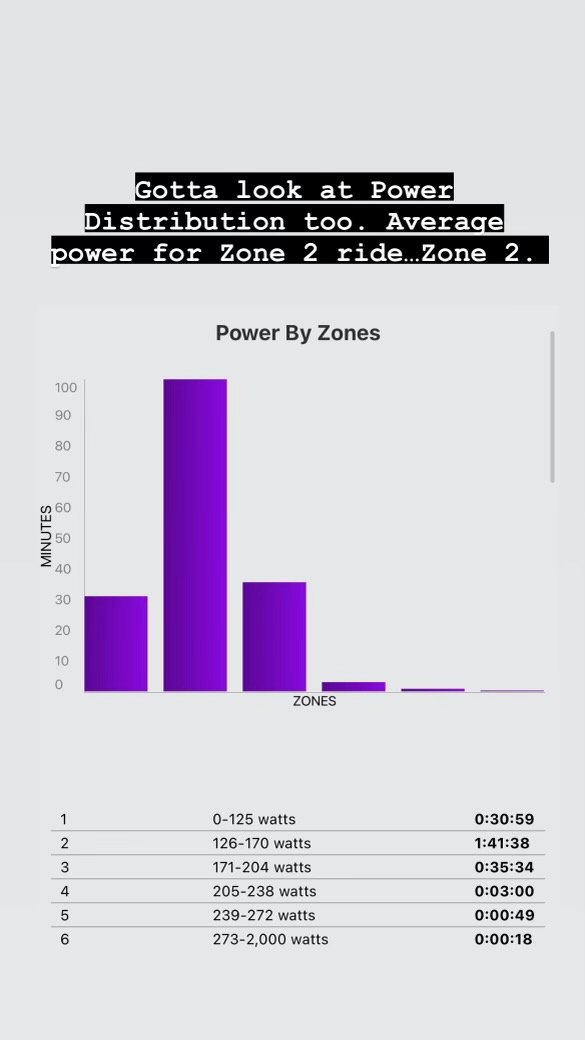Everyone loves easy rides!
Ah, good ol’ Zone 2 riding. Base miles. It is our foundation...and not enough of us do it!
Zone 2 is 55-75 % of your FTP (threshold) power, or 81-89 % of your LTHR (threshold) heart rate. The perceived exertion is about a 4/10, where you aren’t just spinning around the parking lot but could still talk to a friend most of the ride.
If you scan through a quick selection of training articles, you’ll find high intensity work placed prominently in the picture. You know...why spend lots of hours riding when you can get in shape FAST?! Hard efforts are important, but there is a reason professional riders spend lots of time riding at lower intensities. It improves long term athletic development without burning riders out. Bottom line, it is important to do low intensity work whether you ride 6 hours a week or 20.
This type of training requires some focus, and it doesn’t feel like you're working enough to make a difference. Your high school football coach would NOT be into it. It also goes against our work ethic and natural pacing tendencies. By that I mean riders naturally gravitate towards a medium type effort given the choice.
Since you have already gone through Dr. Stephen Seiler’s YouTube collection, I’m sure you are already sold. You have done that by now, right? At least his famous Ted Talk? Anyway, here are some pointers on how to get the Zone 2 rides in your life.
Effort
Do an easy 10-15 minute warm up before settling into the actual Zone 2 portion ,targeting 60-70% of your FTP and mid Zone 2 for heart rate.. The tough part is not having a swing in increases in power OR big drops. This will mean soft pedaling up most hills to keep your effort in check and pedaling a bit harder than usual on downhills. Power can be jumpy so I like to have my GPS set up where I can see 3 sec power as well as Normalized Power for the Lap. I also like to see the current heart rate AND the average heart rate for the lap. You don’t have to obsess over the numbers, but some awareness is good to build pacing discipline. These rides will feel too easy starting out, but if done correctly will be pretty tiring towards the end. Remember, the goal here is to ride mostly in Zone 2. If you are new to these, keep heart rate steady in low Zone 2 and let power naturally drift down. If you are closer to races, keep the power steady and let the heart rate drift up a bit during the ride.
Metrics
Take a look at the comparison photos below. These illustrate how deceptive power and heart rate averages can be if you don’t look at the context of the actual zone distribution in the ride! Check over your Zone 2 rides when done to be sure you actually did one. It is easy to see 0.70 IF (Intensity Factor) pop up after a ride and think you did a Zone 2 ride when you didn’t. Stay in tune with your body during the ride. On some days, you will feel awesome and naturally ride stronger. Other days, you won’t be able to do as much. Every day is its own, so do your best on that day. Temperature, cloud cover and hydration status can influence heart rate. Many riders find their heart rate drifting upwards during the ride. This drift tends to decrease as you do more of these rides.
Cadence
Your best bet here is to ride a natural cadence. Be aware that dropping really low will exhaust the muscles, and really high will lower your power output. Again, try not to coast! I pretend I am riding a fixed gear on long steady downhills to keep my heart rate up. One thing to note is that your natural cadence rises as your speed rises. If you are on a rolling course, trying to stick to only one cadence is a mistake. I also take the opportunity of shallow climbs to get out of the saddle and do some standing climbing. Give your butt a rest. For those on the trainer, play around with some cadence variations. Choose a cadence, then spend some time at 10 above or 10 below that number.
Route
First of all, do these solo if possible! Riding in a group makes doing these correctly incredibly tough. Whoever is on the front will be a zone or two above the rest due to drafting. If you do ride with a friend, make sure they are onboard with the Zone 2 game for the day! Try your best to find routes on the flatter side with minimal turns, traffic lights...pretty much anything that requires stopping or coasting! Try to minimize stopped time for fueling also. Carry plenty of water and food that is easy to eat while rolling. It is easy to hold the pace steady on the trainer. It will get old quick for longer rides, though!
Duration
Zone 2 rides work with as little as 45 minutes during the week, but the real benefits come from going longer. For weekend rides, the Zone 2 block is good to try for about 75-90 minutes and build it over time. If you are doing longer races or a higher level cyclist, try to eventually move into the 3-4 hour range.
Fueling
I will say it again. Stay hydrated! Take in some calories if you are riding over 90 minutes. Glycogen depletion on these rides is often glorified, but ends up limiting power output over time. Not good.
Boredom
Not everyone loves these, so do what you have to in order to get them done. These rides are a good time for a podcast or music. I like these rides and really just enjoy being outside, they are a unique challenge. If you go without distractions here, the mental training aspect is powerful. Discipline doesn’t just fall out of the sky, you have to build it.
As mentioned above, dedicated Zone 2 work is effective for long term development as a rider. Pros do it, and you should too. It takes some focus and planning, but the payoff of improved power and efficiency is there for the taking. Go for a cruise.








